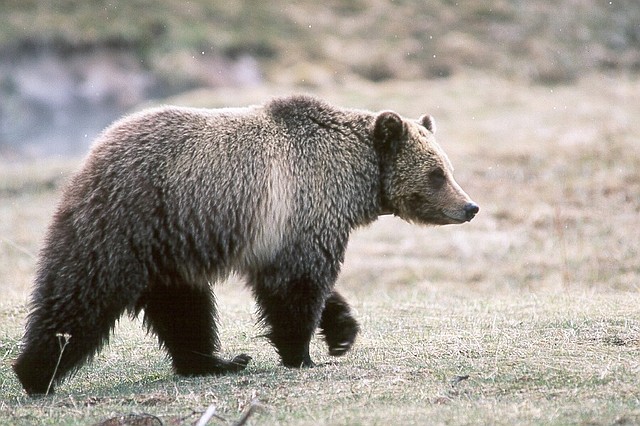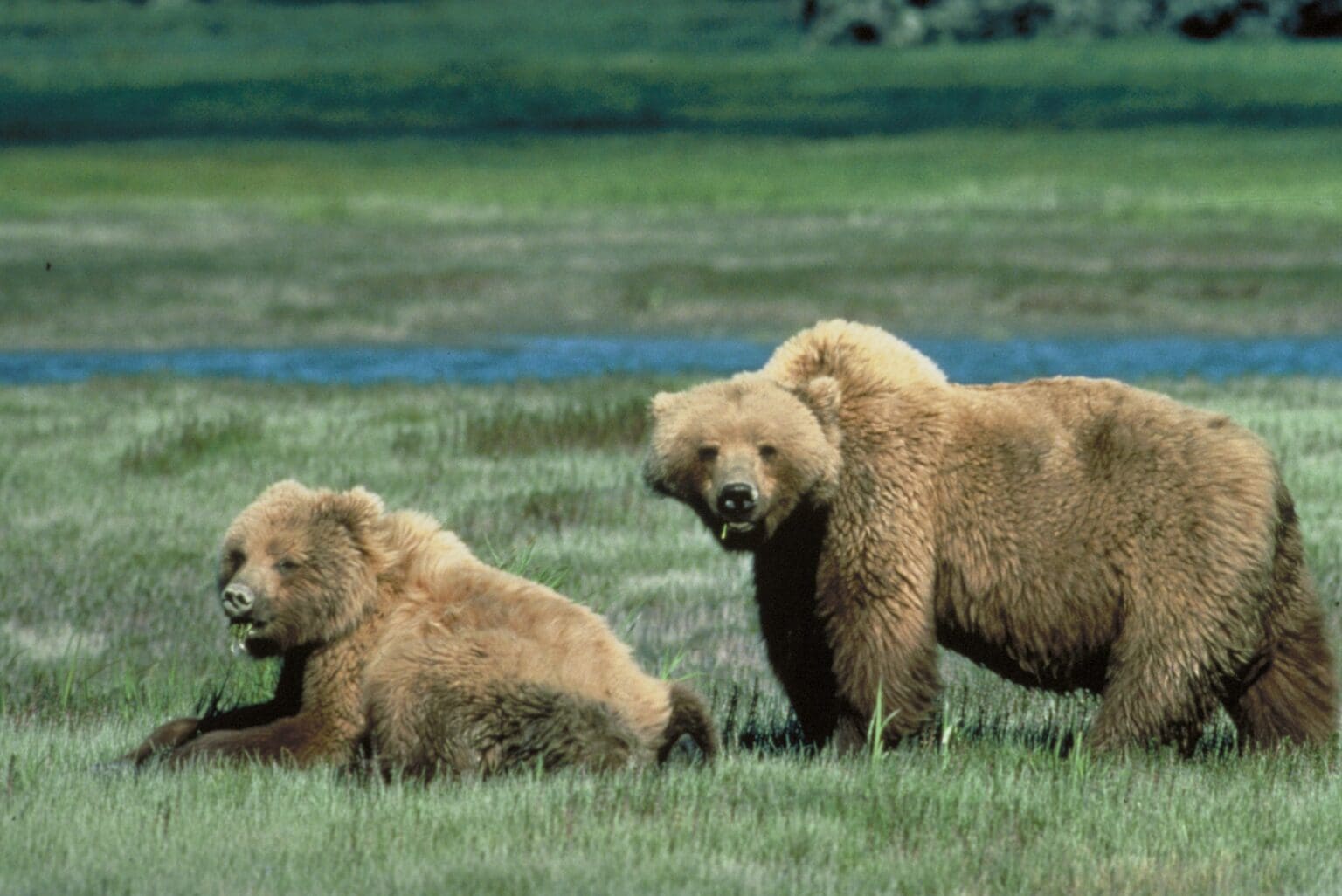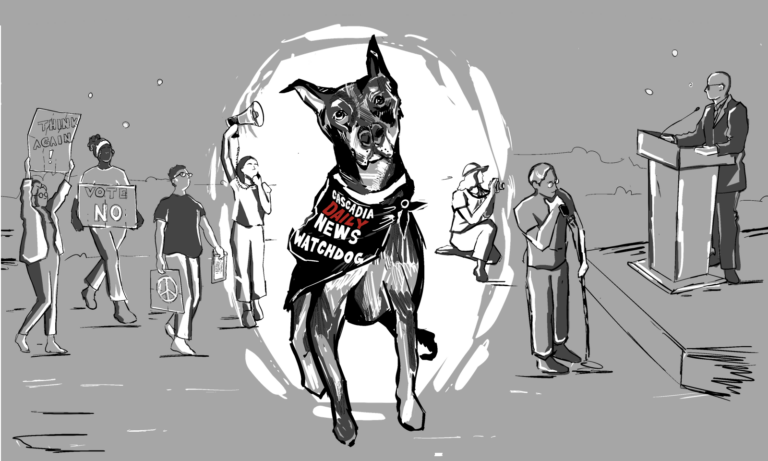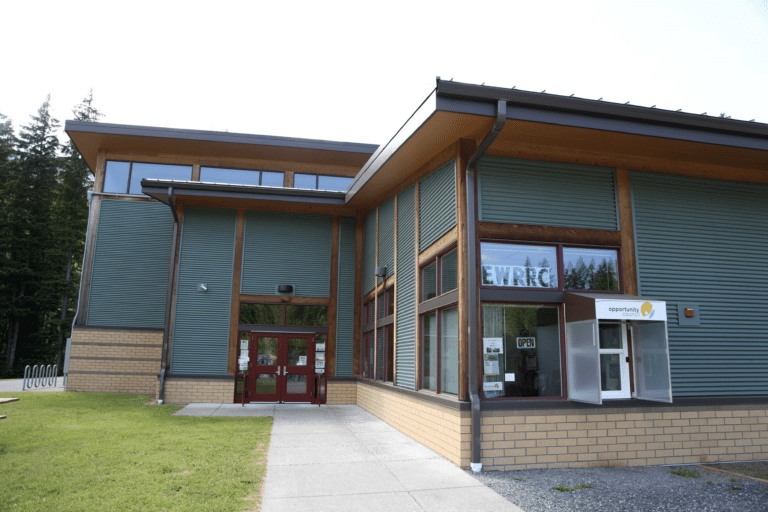NEWHALEM — Firmly entrenched positions highlighted a hearing seeking public comments about plans by the National Park Service and U.S. Fish & Wildlife Service to repopulate the North Cascades with grizzly bears.
Sixteen people delivered brief statements on Wednesday, Nov. 1, that could be framed in two categories: Supporting grizzlies’ return to traditional habitat for ecological, historical and cultural reasons; or opposing the plan based on economic and public safety concerns.
“The notion that we need to have completely safe experiences in the wildest areas of this incredible country seems very selfish to me,” said Brenda Cunningham, a retired state biologist from Mount Vernon. “So many people have become unwilling to share even the remotest places on earth with other creatures. The ecosystems we depend upon are breaking down because of this.”
Bill Schmidt, Skagit Valley Farm Bureau president, said no one in his organization wants grizzlies in their backyard.
“Our vote should count more than somebody in King County or somebody outside of our county,” he told officials. “If they want the bears, put them down in Seattle parks.”
The federal agencies recently held four in-person meetings to gather comments on a draft Environmental Impact Statement and a special addition for local management under section 10(j) of the Endangered Species Act.
A meeting Thursday night, Nov. 2, in Darrington attracted 300 people, a U.S. Fish & Wildlife spokesman said. A final event was held Friday night, Nov. 3 in Winthrop.
The public commentary period ends Monday, Nov. 13. Officials hope to have a final EIS/10(j) rule published early next year in the federal register. After that, agency executives will decide what to do.
Supervisor Don Stiker of North Cascades National Park told attendees in Newhalem that he appreciates the passion for bears.
“That’s fair and appropriate,” he said. “I’d much prefer that than apathy.”
The mythologized mammals that engender fear once roamed from Alaska to central Mexico and as far east as the Great Plains. The numbers decreased to fewer than 1,000 in the Lower 48 states as settlers tried to establish dominion over wilderness by killing them off.
It wasn’t until 1975 that grizzlies in the continental U.S. gained protection under the Endangered Species Act.
Sixteen years later, the Interagency Grizzly Bear Committee, which coordinates federal, state and tribal stakeholders, identified 9,800 square miles of the North Cascades as a viable habitat for the bears’ recovery.
It took two decades before the National Park Service began the first step in repopulating the rugged North Cascades. The Trump administration ended the process in 2020.
“It’s not that the bears are needed — it’s emotional,” said Bob Hopfield, owner of the Cascade Road Wagon Campground in Marblemount. “Just like a lot of us would like to have the old-growth timber, the salmon runs full in the rivers, deer and elk everywhere.”
But the landscape from a century ago has changed dramatically as Western Washington’s population explodes. Roger Pressentin of Bellingham warned officials overpopulation will inevitably lead to more human-bear conflicts.
The last confirmed sighting of a grizzly bear in the U.S. portion of the North Cascades ecosystem was in 1996 near Glacier Peak. But even that is debatable.
Hopfield told federal land managers they don’t need to airlift grizzlies to the North Cascades because the bears already live there. He said he saw a grizzly in May near the Skagit-Whatcom county line.
 A grizzly bear strolls through grassland in Yellowstone National Park. The species being considered for relocation to the North Cascades strikes fear in humans because of their ferocious reputation. (Photo courtesy of Kim Keating/USGS)
A grizzly bear strolls through grassland in Yellowstone National Park. The species being considered for relocation to the North Cascades strikes fear in humans because of their ferocious reputation. (Photo courtesy of Kim Keating/USGS)
The National Park Service’s draft impact statement offers options for creating a population of 200 bears by releasing three to seven grizzlies annually within a decade.
The two action alternatives call for creating an initial population of 25 grizzlies before switching to adaptive management, the impact statement says.
A “no action” alternative would continue existing management practices.
Perhaps the most complicated piece of the proposal is the 10(j) rule. Officials said it is a way to help threatened or endangered species recover by allowing the reintroduction of experimental populations into a natural habitat. It also was added to the third option to give local communities more flexibility in managing grizzly populations, including deterrence, relocation or removal of animals involved in conflict.
Bellingham’s Susan Kane-Ronning, the co-chair of the Washington Sierra Club Wildlife Committee, asked federal officials to modify the 10(j) rule to provide more protections for the bears so locals do not kill grizzlies unnecessarily.
Wayne Kasworm, a grizzly bear research manager for the U.S. Fish & Wildlife Service, helped lead the current project. He was part of a team in 1990 that moved bears from one area to another to augment a population.
The project — the first of its kind in the Lower 48 states — increased the population of six bears in Montana’s Cabinet Mountains to a current residency of 30 or more animals.
Kasworm said in an interview in Newhalem the backcountry bears in his area have no history of conflicts with humans. He said they aren’t the scary apex predators that get most media attention.
Kasworm outlined grizzlies’ importance to the ecosystem: They aerate the soil through digging; clean up the forest as scavengers, and disperse seeds by eating a lot of plants.
Such statements do not appease Washington ranchers and farmers. The contingent has compared concerns about bears to the relocation issues with gray wolves.
In the past decade, Yakima rancher Dan Newhouse has politicized restoration plans using his megaphone as a U.S. congressman. Last month, the Republican representative introduced a one-page bill in the House to squash the relocation proposals.
Newhouse’s bill arrived just weeks after Stevens County Sheriff’s Office in northeastern Washington reported capturing a young grizzly bear near Colville that had been breaking into a chicken coop and stealing food. Deputies worked with state wildlife experts to relocate the offending bear, the sheriff’s office said in a Facebook post.
Ranchers and farmers are not the only ones against the plan. The Sauk-Suiattle Indian Tribe sent an opposition letter in May to North Cascades National Park expressing concern that grizzly bears would diminish their traditional salmon fishing grounds and their ability to harvest berries.
“Given the fragility of wild salmon in headwater spawning areas, this resource could be decimated by the introduction of grizzly bears,” said the letter, signed by tribal chairman Nino Maltos II.
The letter also expressed concerns that officials cannot contain grizzly bears to stay within federal lands.
For information on the proposals and how to submit comments by Monday, Nov. 13, visit parkplanning.nps.gov/NCEGrizzly.




